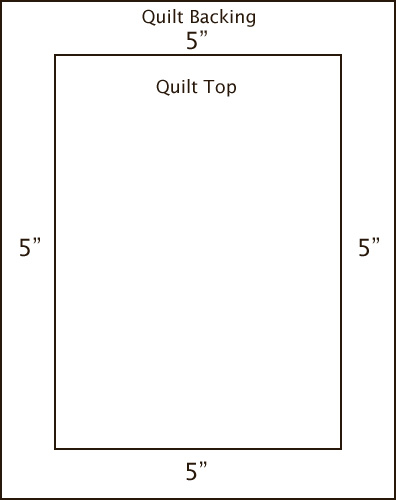Preparing Your Quilt for Quilting
The following are helpful tips in preparing your quilt top for the quilter. It should be used as a guide. Not every quilt will meet all requirements. The quilter is experienced and ready to help with any difficulties you may encounter with your quilt.
Click Here to View Printable VersionPreparing Your Quilt Top
Your quilt top should be clean and free from pet hair, odors, and stains.
Make sure that your quilt lays flat. If the quilt flares and does not lay flat, there is a greater chance that it may pucker or have tucks in the finished quilt.
The top should be well pressed. It is always a good idea to press from the back side of the quilt top. The seams should be pressed in opposite directions to avoid thick seams. Thick seams are sometimes too thick for the machine needles to quilt through, resulting in thread/needle breakage and interrupted quilt design.Clip all loose threads. Untidy threads (especially dark thread) can bleed through light fabrics. If left untrimmed, they will be visible from the front of the finished quilt.
Make sure all seams are sewn securely. Once the quilt is in the quilt frame, there is stress placed on the seams. If not securely sewn, they could be stretched and possibly pulled apart.
Do not baste your quilt.
There should be no loose objects on your quilt top. All embellishments (buttons, bows, metals, ribbons, etc.) should be removed before the quilt is quilted and reattached after the quilting is completed. Embellishments of any kind cannot be quilted over and will result in broken needles or damage to the machine.
Make sure your quilt is as square as possible. You can do this by taking 3 measurements vertically, left, right, and center. The measurements should be close to the same (not more than ½ inch difference). Take measurements horizontally. The more square the quilt, the less likely your quilt will have tucks during quilting.
Preparing Your Quilt Backing
Select 100% cotton fabric for your back.
Choose backing fabric wisely. It should compliment the quilt. When choosing the fabric, keep in mind the color of the top and the thread color you want use for the quilting. I recommend the same color thread on top and bottom to avoid the bobbin thread showing on top or the top thread visible on the bottom. Sometimes it is necessary to change colors in order to enhance the visual effect of the quilting. In that case, medium to large prints can hide any discrepancies.
Remove selvages from the seams. Seams should be ½ and pressed open. The seams should be even at each end of the seam (no overhangs).
Backing Size Cut the backing no less than 10” larger than the width and length your quilt top.Example: Quilt top measures 65 x 80, backing should measure 75 x 90. If purchasing backing fabric requirements from a pattern, please make sure the fabric requirement will be an adequate amount to include the necessary “10 inch rule”. Your backing should be as square as possible.
(See Diagram Below)
Iron the backing. It should be pressed with seams open and folded carefully or draped on a hanger to avoid wrinkles.
